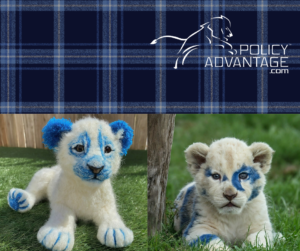Evolution of Insurance Platforms: Legacy Companies vs. InsurTech Companies
/in Uncategorized /by PolicyAdvantageThe insurance industry is undergoing a significant transformation, driven by advancements in technology and changing customer expectations. Central to this transformation are two types of platforms: traditional “legacy insurance company” platforms and modern “InsurTech” platforms. Understanding the differences between these platforms is crucial for insurance companies looking to stay competitive in the digital age.
Legacy Insurance Company Platforms
Legacy insurance company platforms refer to the traditional systems used by established insurance companies. These platforms have typically been in place for decades and are often characterized by:
- Mainframe and On-Premise Systems: Legacy platforms often rely on mainframe computers and on-premise servers, which can be costly to maintain and upgrade.
- Monolithic Architectures: These systems are usually built as monolithic applications, making them inflexible and difficult to scale.
- Manual Processes: Many legacy systems still depend on manual processes, leading to inefficiencies and a higher risk of human error.
- Limited Integration: Legacy platforms often struggle to integrate with modern technologies and external systems, hampering their ability to innovate.
InsurTech Platforms
InsurTech platforms, on the other hand, represent the new wave of insurance technology companies that leverage cutting-edge technologies to offer innovative solutions. Key characteristics of InsurTech platforms include:
- Cloud-Based Infrastructure: InsurTech platforms are typically built on cloud infrastructure, offering scalability, flexibility, and cost savings.
- Microservices Architecture: These platforms often use microservices architecture, allowing for modular development and easier updates.
- Automation and AI: InsurTech companies leverage automation, artificial intelligence (AI), and machine learning to streamline processes, reduce costs, and enhance customer experiences.
- Integration Capabilities: Modern APIs and integration tools enable InsurTech platforms to seamlessly connect with various systems, enhancing functionality and interoperability.
The Need for Legacy Modernization
For legacy insurance companies, modernizing their platforms is not just an option but a necessity. Several factors drive the need for modernization:
- Customer Expectations: Today’s customers expect seamless digital experiences, personalized services, and quick responses, which are challenging to deliver with outdated systems.
- Competitive Pressure: InsurTech companies are rapidly gaining market share by offering innovative products and services. Legacy insurers must modernize to stay competitive.
- Regulatory Compliance: Regulatory requirements are continually evolving, and modern platforms offer better tools to ensure compliance.
- Operational Efficiency: Modern platforms can significantly reduce operational costs through automation and improved efficiency.
Technologies Utilized in Modern Insurance Platforms
Both legacy modernization efforts and InsurTech platforms utilize a range of technologies to drive innovation and efficiency:
- Cloud Computing: Offers scalability, flexibility, and cost-efficiency, allowing insurers to handle large volumes of data and transactions.
- Artificial Intelligence and Machine Learning: Used for risk assessment, fraud detection, customer service chatbots, and personalized product recommendations.
- Blockchain: Enhances transparency, security, and efficiency in claims processing and policy management.
- Internet of Things (IoT): Collects real-time data from connected devices, enabling usage-based insurance models and proactive risk management.
- Robotic Process Automation (RPA): Automates repetitive tasks, reducing errors and freeing up human resources for higher-value activities.
- Advanced Analytics: Provides insights into customer behavior, risk patterns, and market trends, informing strategic decisions.
Technology plays a crucial role in transforming the insurance supply chain from procurement to distribution:
- Procurement: Modern procurement systems leverage AI and analytics to identify the best suppliers, negotiate contracts, and manage vendor relationships efficiently.
- Underwriting: Advanced algorithms and machine learning models assess risks more accurately and quickly, leading to better pricing and customer satisfaction.
- Policy Administration: Cloud-based policy administration systems streamline policy issuance, renewal, and management, reducing administrative burdens.
- Claims Processing: Automation and AI-driven systems expedite claims processing, enhance accuracy, and improve customer experiences.
- Distribution: Digital platforms and APIs enable insurers to distribute products through multiple channels, including direct-to-consumer models, brokers, and partnerships with other businesses.
Conclusion
The insurance industry stands at a crossroads, with legacy insurers needing to modernize to compete with agile and innovative InsurTech companies. By embracing modern technologies and transforming their platforms, legacy insurers can not only meet evolving customer expectations but also improve operational efficiency and remain competitive in a rapidly changing market. The journey from procurement to distribution is being reshaped by technology, heralding a new era of insurance where agility, innovation, and customer-centricity are paramount.
4o

 At PolicyAdvantage.com, innovation isn’t just a buzzword—it’s a way of life. Recently, our team embarked on an exciting journey that merged creativity with cutting-edge technology, resulting in a captivating visual representation of our brand values. Let us introduce “Operation Glacier Mane.”
At PolicyAdvantage.com, innovation isn’t just a buzzword—it’s a way of life. Recently, our team embarked on an exciting journey that merged creativity with cutting-edge technology, resulting in a captivating visual representation of our brand values. Let us introduce “Operation Glacier Mane.”